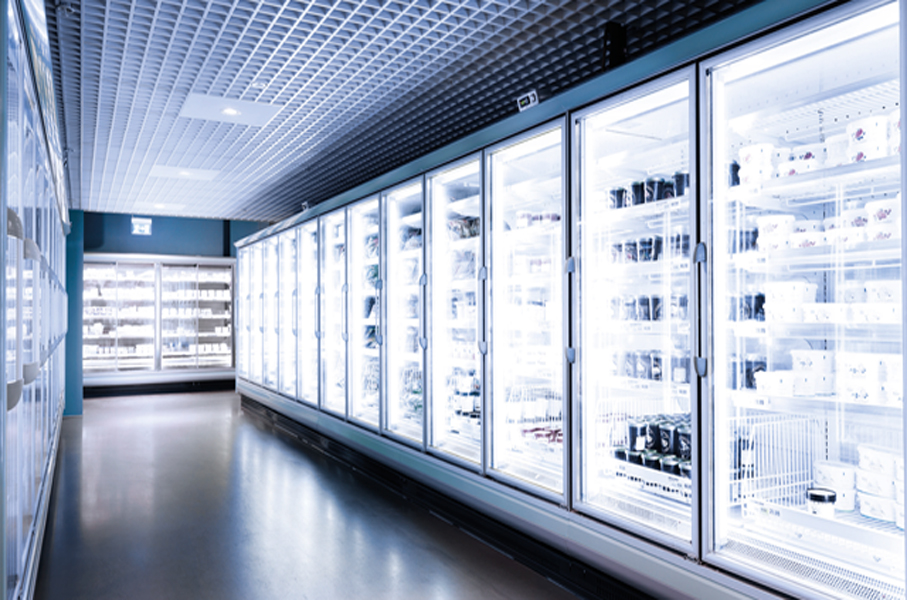Refrigeration and refrigeration repair commercial are features most important in retail grocery and cold storage. It enables a company to store and transport at a given temperature, which in turn helps maintain the quality and safety of products. However, refrigeration systems can also be large energy consumers and cost sources.
Actually, refrigeration can account for as much as 70% of facility energy usage. That is why proper refrigeration commercial repair is of essence for the optimization of energy efficiency and reduction of costs.
When you think of commercial refrigeration, consider this: The refrigeration component of utility bills can be as much as 16% of the total energy consumption in restaurants. That’s quite significant when you start adding up those numbers over time.
It may be defined as strategies and the best practices to harness most from the refrigerating system, and ensure minimal environmental impact, and cost.
These are the key areas to concentrate on for better Refrigeration Management:
- Regular Maintenance: Refrigeration management is mostly about maintaining the refrigeration system properly by cleaning or changing air filters, checking refrigerant levels then examining the different components for used auto parts. This system will always perform at its maximum capacity if it is maintained regularly thereby eliminating chances of malfunctioning or breaking down completely as well as minimizing expenses that could be associated with fixing them up when they occur.
- Upgrading to Energy-Efficient Systems: Older refrigeration systems in operation are less energy-efficient compared to new ones. Upgrading to energy-efficient systems will significantly reduce the energy consumption and expenditure of companies. These energy-efficient refrigeration systems adopt variable speed compressors, digital scroll compressors, and electronic expansion valves, which raise performance levels while minimizing energy consumption.
- Using Alternative Refrigerants: Chemical refrigerants including CFCs CFC’s and HCFC’s have been determined to be harmful to earth’s atmosphere in doing so causing ozone layer depletion. As a result of this; many industries have resorted to alternate refrigerants such as HFOs or natural ones which are ammonia and carbon dioxide based. In addition, there are several such replacements which are less harmful to the environment and can be seen as potentially using more power than others.
- Complete Insulation and Air Sealing: Insulating properly and sealing air will help reduce energy losses and the work required of refrigeration systems. Insulation around refrigeration units and pipes helps in lessening heat transfer and, therefore, cuts energy loss. Air sealing is a way to keep cold air from leaking out and warm air from entering, hence reducing the load on refrigeration systems and making them more energy-efficient.
- Proper System Sizing: Proper system sizing is vital to maximize efficiency and minimize cost. An oversized refrigeration system will use more energy than a properly sized one, cooling the same space, needlessly increasing costs. Undersized systems may be unable to maintain proper temperatures, and they may require more repairs. Proper sizing will ensure a system is running at an optimal level, hence reducing energy usage and costs.
The Role of Energy Efficient Equipment in Reducing Energy Consumption
In our quest for improved energy savings, modern equipment in the form of energy star models have become a game changer. These technological wonders provide unmatched performance at a lower power consumption rate.
Below mentioned are the points to be considered:
- They create less heat than the conventional ones and therefore reduce the requirement of the additional cooling systems.
- Fewer breakdowns from overheated components or overworked systems equate to reduced maintenance costs.
And here, we are not just talking about financial savings; there also stands a compelling case for a positive environmental impact. While initial investment might be required, long-term gains are justified.
Tips for Effectively Managing Your Commercial Refrigeration System
The machine has to be maintained effectively, and it is not just all about hardware selection. Undoubtedly, simple maintenance steps, including keeping the coils clean and checking door seals for leaks that can lead to wasted cooling effort, are critical but usually overlooked aspects of many maintenance routines.
- Clean Coils on an alternative basis
- Check for door seals on a regular basis
- Maintain optimal internal temperature settings depending on what you are storing inside the refrigerator.
Get into the habit of having an annual refrigerator repair commercial check-up. This will ensure that technicians can give your screw compressors and your condenser motors a good going-over.
Conclusion
Optimization of commercial kitchen refrigeration repair to be energy-efficient and ensuring proper refrigerator repair commercial can help lower operational costs, reduce environmental damage, and ensure business sustainability. Businesses can realize considerable energy savings by regularly carrying out refrigeration repair commercial maintenance, updating their systems with energy-saving alternatives, optimizing system settings, and using high-end monitoring and control technologies. An investment in energy-efficient refrigeration solutions guarantees that the bottom line will be benefited, and a commitment to environmental sustainability and the need for proper refrigerator repair commercial.

 0800 644 2727
0800 644 2727
